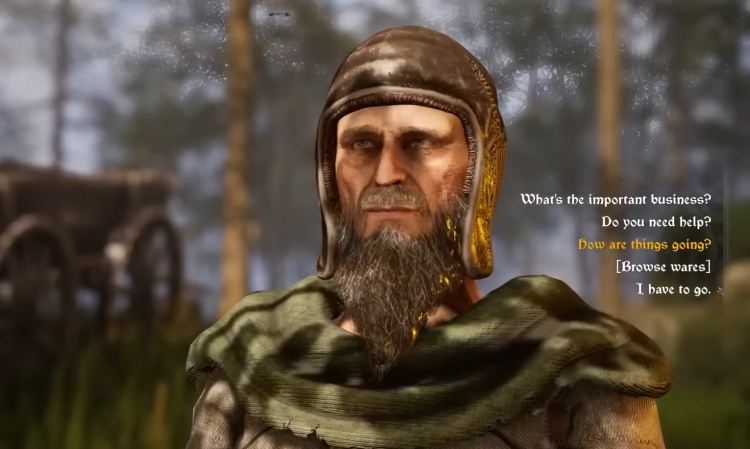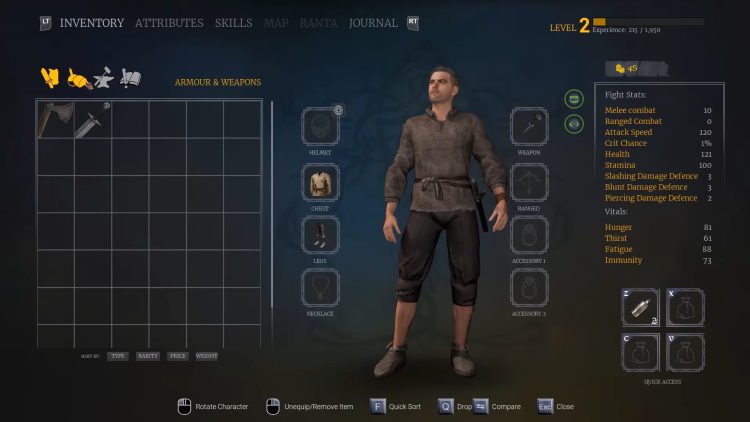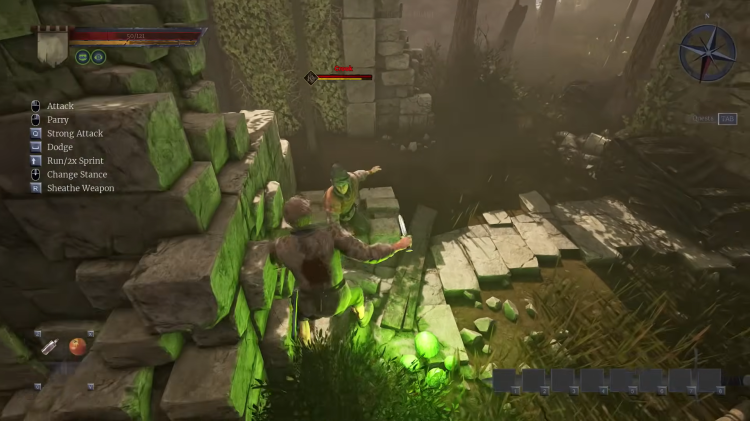Of Ash and Steel Is an Old-School RPG Where You Start Clueless and Probably Die
In Of Ash and Steel, you're not a knight, a mage, or a legendary hero. You’re Tristan—a cartographer. Your job is to map an island nobody else wants to visit because it’s cursed with volcanoes and choking ash. And before long, you’re the last person left alive on your expedition.
The setup is classic RPG material, but Of Ash and Steel is not interested in making you feel powerful right away. If anything, it's doing the opposite. The first few hours show you exactly how useless Tristan is in a fight, and how much you’ll have to earn just to survive. You don’t start with skills, you don’t start with good gear, and the people around you think you’re a joke. It’s a full zero-to-hero story, with nothing handed to you and everything earned.
The preview build of the game makes it clear that this is a love letter to RPGs from the early 2000s. It has no quest markers, no blinking objectives. If someone says:
“Go past the second broken statue, turn right at the burnt tree,”
That’s what you do. The game expects you to pay attention to the world. At the same time, it doesn’t go full survival sim—though you still need food, water, and a safe place to sleep. Campsites let you rest, cook, and recover, and time moves forward in meaningful ways. NPCs follow schedules. Enemies disappear at night or sleep through certain hours. Your map is something you earn, not something that tells you everything.

Visually and structurally, it feels like something between Gothic, The Witcher 1, and Outward. There’s that same gritty tone, rough edges, and reliance on trial-and-error exploration. Some of it’s janky, some of it’s charming, and all of it is aimed at players who enjoy putting the pieces together themselves. Developer Fire Frost knows exactly what kind of game this is. They’re not trying to make a cinematic open-world blockbuster. They’re making a mid-tier RPG that knows its audience and leans into the weirdness.
That includes humor. One early quest involves a man who regularly drinks himself into unconsciousness and soils his pants. Your job is to track down those disgusting trousers. It’s a minor task, but one that shows you what kind of world you’re in: not just one of high-stakes drama, but one where people are messy, flawed, and sometimes just gross.

The game has no level scaling. Enemies are always the same level and always in the same place. If you wander too far, you’ll probably die. Early on, you’re warned: do not stray off the main roads unless you’re ready. This kind of danger makes exploration risky but rewarding. You’ll want to quicksave often. One misstep can get you flattened by a rat-thing or speared by a bandit. And Tristan? He’s bad at everything at first. He swings swords like they’re made of lead, and you’ll probably miss or fumble your way through most early fights.
“If at the beginning of the game you were treated like a ragamuffin, by the end of the game the characters will literally bow to your feet.” — Fire Frost
That’s the core promise. Your gear gets better. Your stance system expands. Tristan has three skill trees: Combat, Survival, and Crafting. Combat gives you stances and weapon mastery. Each stance plays differently, and you can only slot three at a time. There’s a real sense of commitment and progression, starting with shaky strikes and unlocking new moves as you train. Early on, daggers and quick attacks might be your only hope. Slow weapons punish mistakes. Later, as you learn to parry and counter, the fighting becomes smoother and more responsive. But never easy.

Survival and Crafting aren’t just flavor. Survival keeps you alive—tracking hunger, water, and letting you use tools like traps or poisons. Crafting lets you upgrade your gear, patch armor, and even earn money by selling supplies. NPC trainers charge you for new skills, so you’ll need gold. That means jobs, quests, or turning raw loot into something valuable. Everything feeds back into survival, combat, and reputation. Even buying a decent set of armor can change how characters talk to you.
One villager who mocked Tristan’s starter clothes later complimented him when he showed up wearing a solid chestplate. That kind of reactive worldbuilding isn’t flashy, but it sells the fantasy of growth. You go from being ignored or ridiculed to being treated with respect. It’s not just about level numbers—it’s about how the world acknowledges your progress.
The fights don’t pull punches. You can die in two or three hits if you’re not careful. Even low-tier enemies can shred you if you make a mistake. Bigger ones? They’ll just end you. Preview Tristan died to rats, bugs, lizards, trolls, and a whole variety of undead bandits. That’s just part of the process. You’ll quickly learn how to kite enemies toward powerful NPCs for backup or sprint for the nearest high ground. Escape is a skill.
The good news is that the systems work together. Level up Crafting, and you can sharpen your weapon for better damage. Invest in Survival, and you unlock ways to poison blades or throw knives. These skills don’t just help—they open entirely new tactics. And they matter, especially since most enemies don’t scale to you. When you return to an area that once crushed you and win a fight without dying, it feels earned.
But it’s still clunky. The combat in this preview build was slower and heavier than most modern action RPGs. Players used to the tight flow of Elden Ring or Dragon’s Dogma 2 might find it awkward at first. You need to commit to your swings. Dodging has timing. And if you haven’t unlocked a stance or a skill, you’re stuck with what you’ve got. For some, that will be frustrating. For others, it’s just part of the climb.
There’s a growing space for games like Of Ash and Steel — the mid-budget RPG that doesn’t care about cinematic cutscenes or giant sandbox maps. It cares about structure, progression, and doing more with less. The island of Grayshaft feels compact but dangerous, and the story setup—one cartographer trying to survive after everyone else dies—gives a solid reason for you to explore, grow stronger, and finish the mission.
Fire Frost’s references are clear. This is a game for fans of Gothic, Risen, and Elex. That means campy lines, grimy visuals, and odd little quests that make you laugh or raise an eyebrow. But it also means real stakes, real challenges, and a story that wants you to start at the bottom and work your way up. That’s not always the kind of experience studios take risks on in 2025. But for players tired of overpowered protagonists and golden-path questlines, it might be exactly what they want.
Don’t expect Of Ash and Steel to reinvent the RPG genre. But based on the early hours, it’s a game that knows what it is and doesn’t care if it’s not for everyone. The kind of RPG that lets you die, makes you fight for every coin, and actually reacts when you finally stop looking like a lost orphan.
Of Ash and Steel is planned for release sometime in late 2025. No exact date yet. But if you like the sound of tough fights, old-school exploration, and the kind of protagonist who can barely hold a sword at the start, keep this one on your radar.

Comments